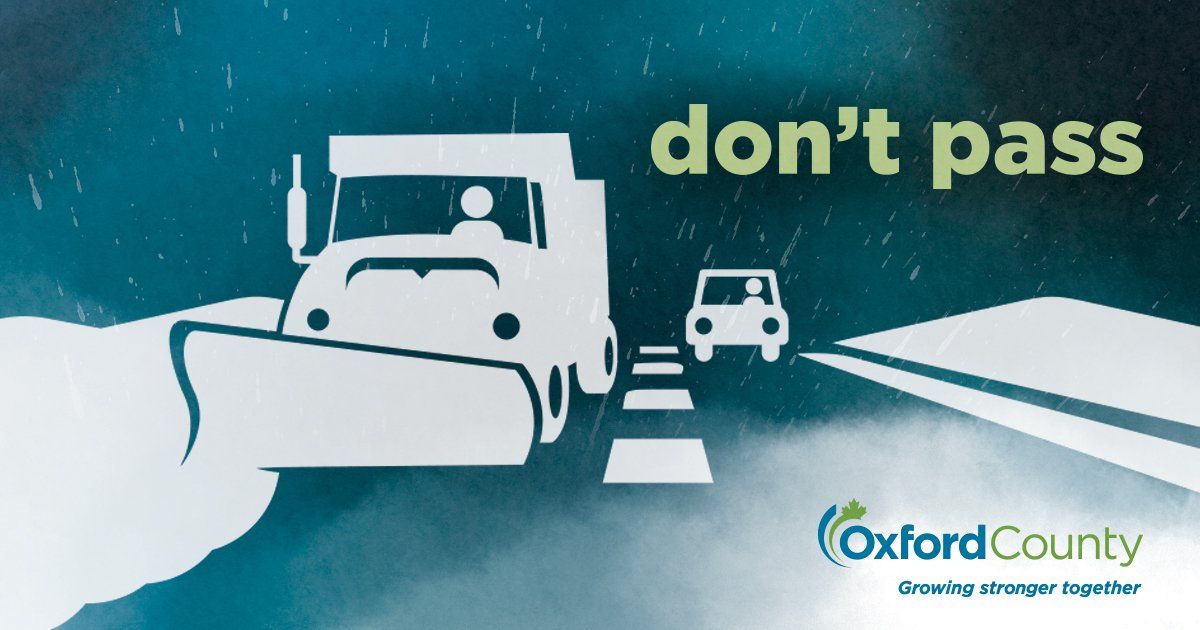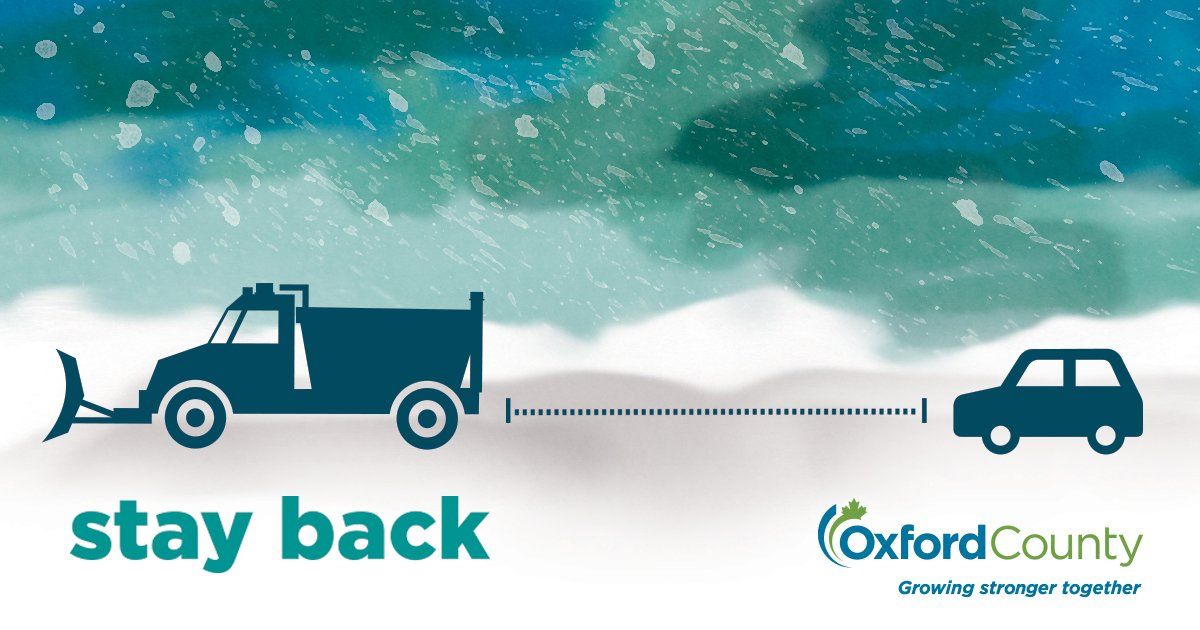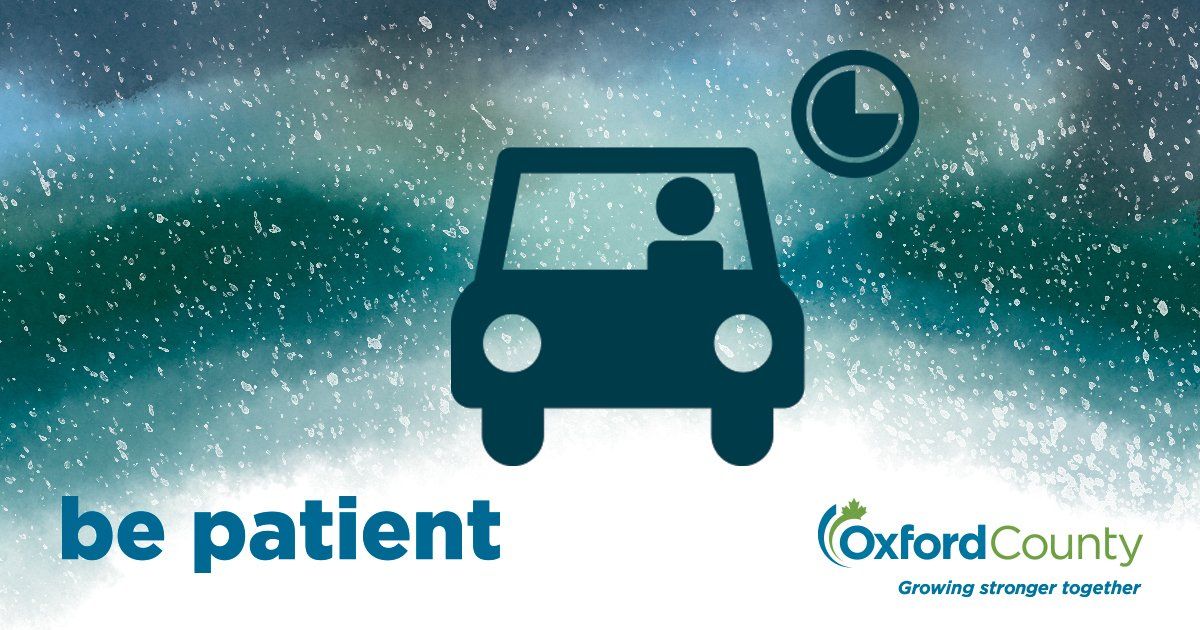Winter Driving
Driving near snow plows
Oxford County snow plows work during the winter to keep the County’s major roadways clear and safe for travel, along with our municipal partners who are responsible for secondary roads and residential streets. All snow plow operators have an important job to do. If you spot a plow, follow these safety tips:
STAY BACK
County plow trucks typically travel below the posted speed limit, as slower operating speeds are more effective for clearing roads, applying salt and, if conditions are desirable, anti-icing liquid.
BE PATIENT
Crowding, tailgating or passing a snow plow can be very dangerous. A fully loaded plow truck cannot maneuver easily or stop quickly and has many blind spots. Don’t assume a snow plow operator can see you, especially if you are driving too close and visibility is poor, which is often the case.

DON’T TRY TO PASS
Passing a snow plow is never a good idea. Although they move slowly, the road behind an active plow is always safer than the road ahead. A good rule of thumb is to allow 10 car lengths between you and the plow since plowing creates a cloud of snow, which can decrease visibility and simulate whiteout conditions.
Maintenance activities during a winter storm
Our crews get prepared and:
- Check for changing road and weather conditions.
- Make sure staff, supplies and equipment are ready and available.
- Apply anti-icing liquid to road surfaces (if conditions are desirable)
During a typical snowstorm, crews will:
- Spread salt when the snow starts to accumulate
- Plow when there is snow or slush on the roads. Note: crews may need to go over their routes several times during a storm.
- Continue monitoring road, weather and traffic conditions
- Refuel and reload salt, sand and anti-icing liquids
After a typical snowstorm, crews will:
- Monitor road, weather and traffic conditions
- Continue to clear roads
- Remove snow banks that may cause a hazard
- Check for damage to items such as signs and guide rails that may have occurred during the storm and make necessary repairs
- Inspect and, if required, repair winter equipment
- Refuel and restock salt, sand and anti-icing liquids
Driving safely in the winter
Winter weather can be unpredictable but extra preparation and caution can help you stay safe.
- Check the weather forecast. If it looks bad, delay your trip if possible
- Visit Ontario 511 to check road conditions, or check Twitter @511Ontario
- Monitor local news sources for localized road and weather information
- Adjust your speed for road conditions
- Turn on your headlights and tail lights, even during the day
- Use winter-rated snow tires with the mountain-snowflake symbol
- Assume that bridges are slippery since they freeze more quickly than road surfaces
- Keep your fuel tank at least half full to help reduce moisture in the fuel system and add weight to the vehicle
It’s a good idea to keep a winter survival kit in your vehicle. Recommended
items include:
- Ice scraper/snowbrush
- Shovel
- Traction mats or sand
- Flashlight
- Blanket and extra warm clothes
- Jumper cables
- Candles and a lighter or matches
- First aid kit
- Non-perishable energy foods (e.g. granola bars) and bottled water
For more information on emergency kits, visit Oxford 72 hours
For more information about safe winter driving download Winter Driving Be Prepared Be Safe from the Ministry of Transportation.


